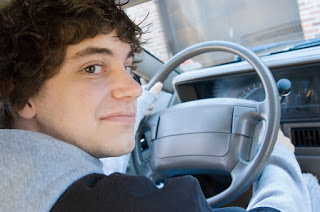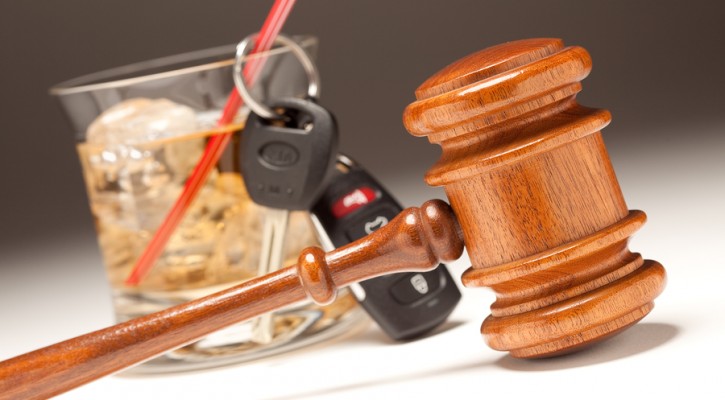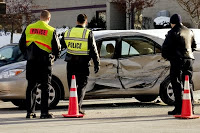You Snooze, You Can Lose…Your Life
December 15, 2006
Did you know that if you are driving at 60mph, and you close your eyes for one second, your car would have traveled almost 90 feet? Yep, it’s a scary fact, and evidence that driving while tired is just as dangerous as drinking and driving. Thankfully, there is a website I just discovered that can help keep teens save while driving at night or in the early mornings, or anytime drowsiness is a problem.
If you visit www.thenonap.com, you’ll see they’re selling a gadget called No Nap. This is a little device fits behind your ear and senses when you become drowsy. To keep you from dosing off, it sounds an alarm to help keep you alert and awake.
No Nap will set you back $20, but that is well worth it, considering it can save your life. It’s even offered in three colors: grey, red, and yellow – so you can pick the color best suited to your personality.
As teenagers, we can use all the help we can get staying safe on the road. Fatal car accidents are the number one killer of teenagers, and falling asleep at the wheel is a big cause of car accidents. If your car can travel 90 feet in one second while going 60mph, think of what can happen if you nod off for only a few seconds. If you think you’ll wake up if your car drifts off the road, or if you’ll have time to react when you “come to,” think again. Products like the “No Nap” can help save your life.

Study Says Teen Drivers in Arizona are Dangerous
December 15, 2006
A recent study by Arizona State University showed that, once again, fatal car accidents are the number one killer of Arizona children in 2005. During that year, 1,148 children under age 18 were killed. The study concluded that teen drivers accounted for much of the loss, which is a shame. Nationwide, car crashes are the top killer of teenagers, so this study is yet more proof that intervention and driver education is needed to help save teen lives.
This study was done by the Center for Health Information and Research at ASU, and about 250 people from the Arizona Child Fatality Review Teams reviewed statistics to come up with the study numbers. More shocking than the number of children killed is the fact that many of these deaths were preventable. The study also revealed that one third of the children, or 388, died under circumstances that were preventable.
ASU research center medical director Dr. Mary Rimsza states, “Parents need to supervise their kids and make sure they are using their restraints, driving safely and making sure they have enough driving experience.” Recommendations for parents include: setting consequences for teens (and enforcing them), showing support for the strengthening of graduated-licensing laws, and making sure their children are safe behind the wheel before allowing them to drive without an adult present.
With many teens involved in drug and alcohol abuse, reckless driving, and failing to wear seat belts, fatal car accidents are only going to continue. By being aware of the statistics, and taking action, parents can help save their child’s life and perhaps the lives of others as well. According to the numbers offered up by the ASU study, the lives of up to 400 children each year can be saved by taking preventative measures when it comes to letting your teens drive.

Parents Really Can Influence Their Teen’s Driving Behavior
December 11, 2006
Did you know one if five tens drink and drive, or that one in eight admit to smoking pot and driving? Considering that auto accidents are the number one cause of teenage death, it really shouldn’t come as a surprise that teens are indeed engaging in risky behavior while driving, but the actual numbers shocking.
These are two small statistics released by a recent study by Liberty Mutual and SADD, or Students Against Destructive Decisions. The seventh annual Teens Today study shows that while teens are engaging in behavior that leaves them at risk for fatal accidents, parents have the ability to greatly reduce the occurrence of these behaviors in their teens.
According to the study, teens report that they are less likely to drive under the influence of drugs or alcohol if they have parents who set driving expectations and give clear consequences for breaking those rules that are set. Liberty Mutual president, Paul Condrin, points out that “… parents need to know the laws and teen-driving rules of their state, set clear expectations with their teens… and establish and enforce those consequences should those laws be broken or expectations not met.”
It’s good news that the role of parents in their teen’s life, and driving activities, play a large role in whether they make destructive choices that may endanger their lives and the lives of others. Reducing fatal car accidents among teenagers – the number one cause of teenage death – is the primary goal of reducing risky behavior such as drinking and driving, talking on the phone or eating while driving, and having multiple passengers that can be distracting to the driver.
What can a parent do? Some tips offered by Liberty Mutual and SADD include knowing the laws in your state; educating your teen about driving, preferably before they reach the legal driving age; continue monitoring your teen after their receive their license; and set clear rules and enforce them. Teens whose parents establish clear consequences are shown to be less likely to speed, drive with three or more passengers in a car, or talk on a cell phone while driving.
The chairman and CEO of SADD, Stephen Wallace, said it best: “Perhaps most important is to set a good example for young drivers and to reinforce their good driving habits by praising what they are doing right behind the wheel.”

Teenage Drivers See Affects of Drinking & Driving Firsthand
December 5, 2006
Teen drivers are learning firsthand just how damaging “one stupid mistake” can be, especially when that stupid mistake is drinking and driving. Students in Anne Arundel County in Maryland participate in a twice yearly “Schools in the Courts” program, which is presented in partnership with the county District Court and The RESPECT Foundation. School officials believe the few hours the students spend in the courtroom just may be the most important schooling they receive in all of their high school years.
Now in its fifth year, the Schools in the Courts program brings students together for four hours in a courtroom, where they are talked to by guest speakers who generally are people involved in fatal drinking and driving accidents. They are also given the opportunity to view informational videos, such as a documentary following the lives of men and women who were convicted of drinking and driving as young adults, and how their lives unfolded from there. The District Court Judge narrates, and then changes into his robe and allows the young drivers to view justice taking place as suspects are brought through for their sentencing.
The students are reminded that they are in a high risk group for becoming offenders, and on the other side of the law. Statistics from 2005 showed that three in five teens drove too fast, three in five had trouble with aggressive drivers, one in five ran a stop sign, and two in five will be involved in an accident before they graduate high school. The sobering statistics show the importance that these teen drivers make smart decisions, putting themselves, their futures, and others out of harm’s way.
The Judge reminded these students that “one stupid mistake” has taken the lives of many, and will continue to do so, but that at this point in time, right now, they have the choice to make the right decisions and not regret having made that mistake. Those who are facing the consequences of drinking and driving wish they could take it back, erase the mark against their records, but it can’t be done. The lesson learned from Schools in the Courts is that mistake is just not worth it.

At Risk Teen Drivers are STOPPED in Michigan
November 30, 2006
AAA of Michigan and the Michigan Sheriffs’ Association have brought a great program to 27 counties in the state aimed at risky teenage drivers. This program, called STOPPED, or Sheriffs Telling Our Parents & Promoting Educated Drivers, was created in order to help prevent many of the fatal accidents that young drivers are at a high risk for being involved in. The goal of the program is to address reckless behind-the-wheel behavior by involving parents, as well as law enforcement, in the ongoing process of learning to drive in Michigan.
Many teens feel that once they pass drivers’ education and receive their permit, that they are declared safe drivers. This certainly isn’t the case, and is proven year after year as fatalities involving teenage drivers and passengers increase across the country. What this program does is help avoid these tragedies by catching risky behavior before it gets out of hand. Parents who do not ride with their children while they are driving may not get a chance to see if there are any risky behaviors going on in the vehicle, such as having a large number of passengers. This is where the STOPPED program comes into play.
Vehicles enrolled in the free and voluntary program are registered in a database. If a driver under the age of 21 is pulled over in that vehicle, for any reason, a completed notification card is sent home to the parents. Information such as why they were pulled over, where they were, and how many passengers were in the vehicle are all relayed to the parents of the new driver. This allows the parents to address these issues immediately, in an effort to reduce any further risk-taking behavior while driving.
The pilot program started in March of 2005, with just seven counties statewide participating. With the recent addition of 20 more counties in the State of Michigan, it is quickly becoming a success. Though the program is voluntary, many parents are finding this a great addition to the other safety precautions they have taken in making sure their children are safe on the road. Now if only other states would follow the lead of Michigan, and do their part to help cut risky driving behavior in teens.
